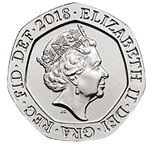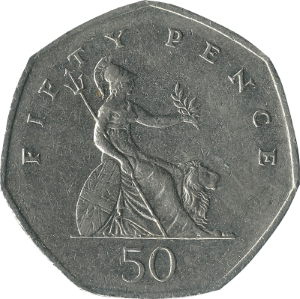Thanks: I hadn’t thought of “uses cash extremely rarely” as an option. And I’ve always gone out of my way to have wallets with coin pouches, but they are harder to find.
This is the critical thing. Very few wallets, and absolutely none that are in a “modern” style, have a coin pouch nowadays.
My only use for coins lately was at a Laundromat when we had to wait on repairs. Sticking 10 quarters into a machine was a pain.
I’ve started a new routine, and it’s been reinforced by this thread…
I get coffee most mornings, and as of a month or two ago, I’m now grabbing a handful of change on my way out the door. Then it goes in the tip jar at Ye Locale Cawffee Joint.
If I get a real breakfast, I grab more change and leave it as a tip. (That way, if the place wants to declare all their tips, that’s okay, but if they don’t, I’ve made Sticking It To The Man easier…)
I end up leaving 25-30% as a tip, in change. More than I would ordinarily, but with this method I think “Hey, I’m getting rid of those pesky coins!”
Put me down as someone else who virtually never uses cash. If a place takes credit cards, that’s what I use. It’s faster than digging out cash and receiving change back; I don’t have to worry about constantly getting money out of the ATM; I have a record of what I’ve spent; and I’m protected by the credit card issuer and can request a refund if I dissatisfied with the service.
Because I rarely use cash, coins are a nuisance. And frankly, they’re not worth much these days due to inflation.
Compared the present day to 50 years ago:
A nickel in 1974 had the buying power that 33 cents does today. So a nickel in 1974 was worth more than a quarter today. A quarter in 1974 had the buying power that $1.63 does today. Coins were worth something back then.
Conversely, a quarter in 2024 has the same buying power that 6 cents had back in 1974. So a quarter today is worth about the same as a nickel was when I was a child. Is it any wonder that nobody really values coins these days?
I used to wait tables At an all night diner. I still remember the time in 1975. I took my girlfriend to Disneyland and paid our entry fee in quarters.
Right, so, according to my little calculation, if we round all prices to the nearest 10 cents and lose the $1 and $2 bills, you don’t want a dollar coin. Have just 10¢, 50¢, 80¢, and $2 coins. (Unless you prefer 10¢, 30¢, $1, $1.60)
A sensible approach to currency simply recognizes the reality of inflation; as I said earlier, a dollar today has about the same purchasing power as a quarter in 1980. The obvious conclusion is that the dollar bill – and by most assessments, the two-dollar bill as well, where it exists – are basically pocket change and should be issued as such. By the same reasoning, the individual cent as a unit of currency is worthless and shouldn’t be issued at all. There’s no immediate reason to abolish nickels but there may be in the future.
And as also said earlier, cents can and should continue to be used in unit pricing calculations. That has nothing to do with the currency in circulation as long as there are legally mandated rules for how to round to the nearest nickel. Indeed, some commodities like fuel are often priced down to tenths of a cent per unit. There doesn’t need to be currency in circulation to reflect those tiny fractions, just rules about how to round the totals if and when necessary.
When dealing in whole cents, no rounding is even needed for electronic payments which is how payments are made almost all of the time. The existence of one-cent coins is just another one of those strange American anachronisms, like the Electoral College, the 2nd Amendment, and Donald Trump.
If the number of sides is odd, then it can be a curve of constant width (like the Reuleaux triangle @Darren_Garrison already mentioned, but any odd-sided regular polygon can be made into a curve of constant width).
This is a solved problem anyway. Lots of coins already exist that are non-circular but have a constant diameter for sorting and sensing (UK 20p and 50p are the most familiar to me).


Right, those UK coins, just like the 11-sided Canadian loonie, are constant-width Reuleaux polygons. Which are not actual polygons because the sides aren’t straight, but are arcs connecting two vertices centered on the opposite vertex. Not something I’d given much thought to but interesting now that you mention it.
I do love how some of the objections to dollar coins seem to be “but how would we solve this difficult problem that the rest of the world has solved, or doesn’t even have?”
There are flat-earthers, I wonder why there isn’t a “bring back the half-penny” group.
It’s rare that I have more than one cash transaction on a single trip away from the house, so there’s almost never an opportunity to spend them as I go.
Continuing from my previous post:
If there’s a tip jar present, I generally put the change there.
Dumping the coins in the jar takes what, five seconds? (Actually two jars, one for quarters and one for everything else. But still: five seconds.)
One real problem nowadays when I’m out and about is: where do I put the coins? This wasn’t a problem 25 years ago, but it is now: my left front pocket where my change used to go is now occupied by my cell phone. My right front pocket has the keys. The hassle of trying to dig change out of a pocket while holding onto a phone or a set of keys at the same time, and then trying to find coins that add up to the right amount…well, it’s a hassle, and I’m holding up the line while I do it. Much quicker and easier to hand over some bills, get change, put it in a pocket, and leave it there until I get back to the car, or more likely home.
My wallet doesn’t have a coin purse, which it shouldn’t. It’s thick enough with just the assorted cards* I carry in it, plus a handful of bills.
Summing up, I’ve got a system that works fine as long as I don’t have to dig change out of a pocket as part of paying someone, but it would become a hassle if I did have to do that. But I don’t have to, so I don’t do it. No hassle.
*Driver’s license, two credit cards, ATM card, AAA card, car insurance card, health insurance cards - it adds up, and adds thickness to the wallet. The wallet lives in one of my back pockets, and it would be uncomfortable to sit down on it if change were there too.
That’s why American Exceptionalism™ holds that universal health care is impossible, and that the paper dollar bill epitomizes the Almighty Dollar that was the founding Christian principle of This Great Nation™ as Jesus the Lord our God intended.
And thus spoke Jesus, and He saith, when thou hast yours, then say unto the others, fuck you, for I have mine, and sucketh to be you who have none. And these paper dollars must circulate until, yea, we are raised into the Rapture come the apocalypse (hopefully still bearing all our Christian guns). And know ye all, that the metric system be the temptation of Satan.
.
I’m not sure I ever had a wallet with a coin pouch, even when I first had wallets ca. 1970. Coins always went in one of my front pockets, and keys in the other. Coins were well on their way to meaninglessness about the time I started carrying a cell phone, so the cell phone more or less replaced the coins.
Sometimes I think that “American Exceptionalism” is the belief held by many Americans that America is exceptionally stupid and incompetent. It’s that great old American “can’t-do” attitude.
If I were a store owner, the ‘cash’ button on the register would round down to the nearest nickle/dime/quarter. The savings in the CC fee pays for it.
I sang in a church choir in the 1980’s where one guy would occasionally lament that the local taxing authority no longer had ‘mil’ coins/tokens to give him change when paying his property tax. He was mostly kidding.
Me neither - wallet goes in back pocket and I will be sort of sitting on it some of the time - I don’t need a lump of coins in there - coins either loose in front pocket or in a separate coin purse - and this never became cumbersome because I didn’t accumulate them - I spent them (and I didn’t inconvenience people behind me in the queue for small purchases because the shelf edge price is the price you pay here, so it’s not that hard to have the correct money already counted out when it’s my turn).
A few times a week, one of my walks is to the Dollar General, where I purchase a $1 bag of some sort of candy. I hand over a dollar bill and either 6 pennies or a penny and nickel for the tax, as I work on increasing the average value of the coins in the coin jar.